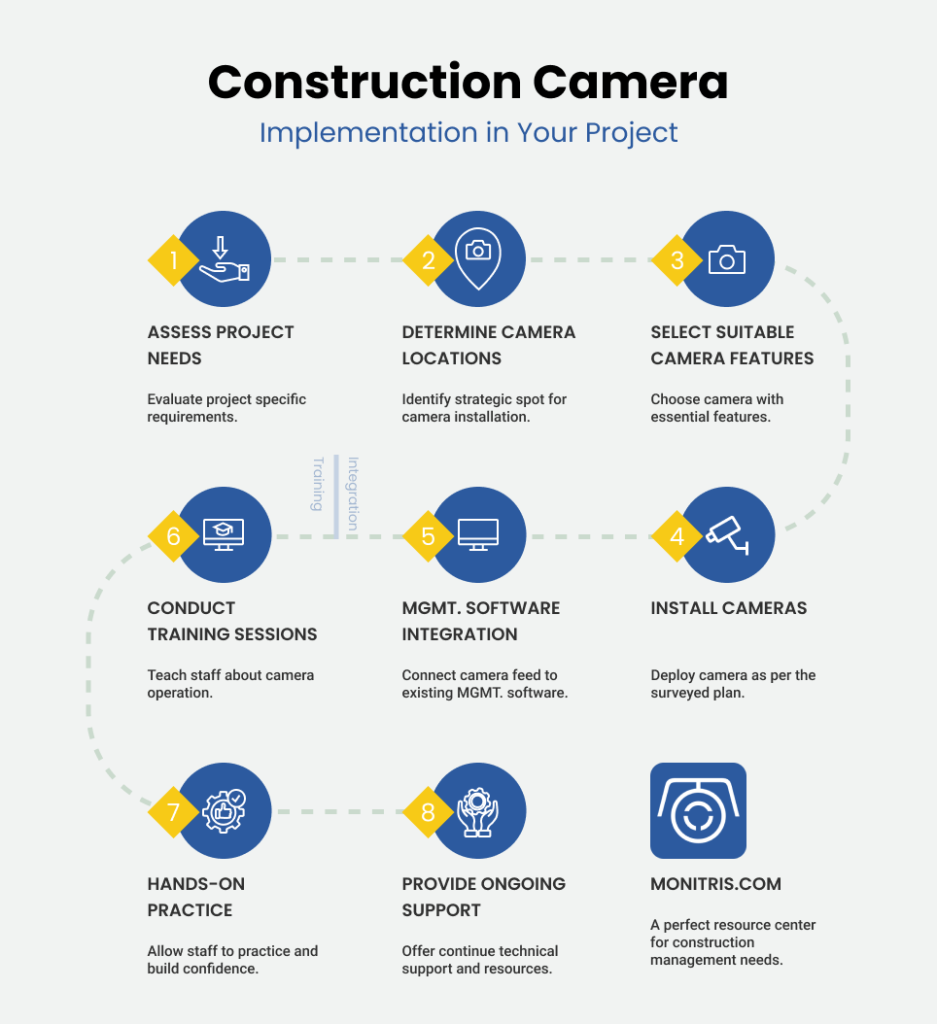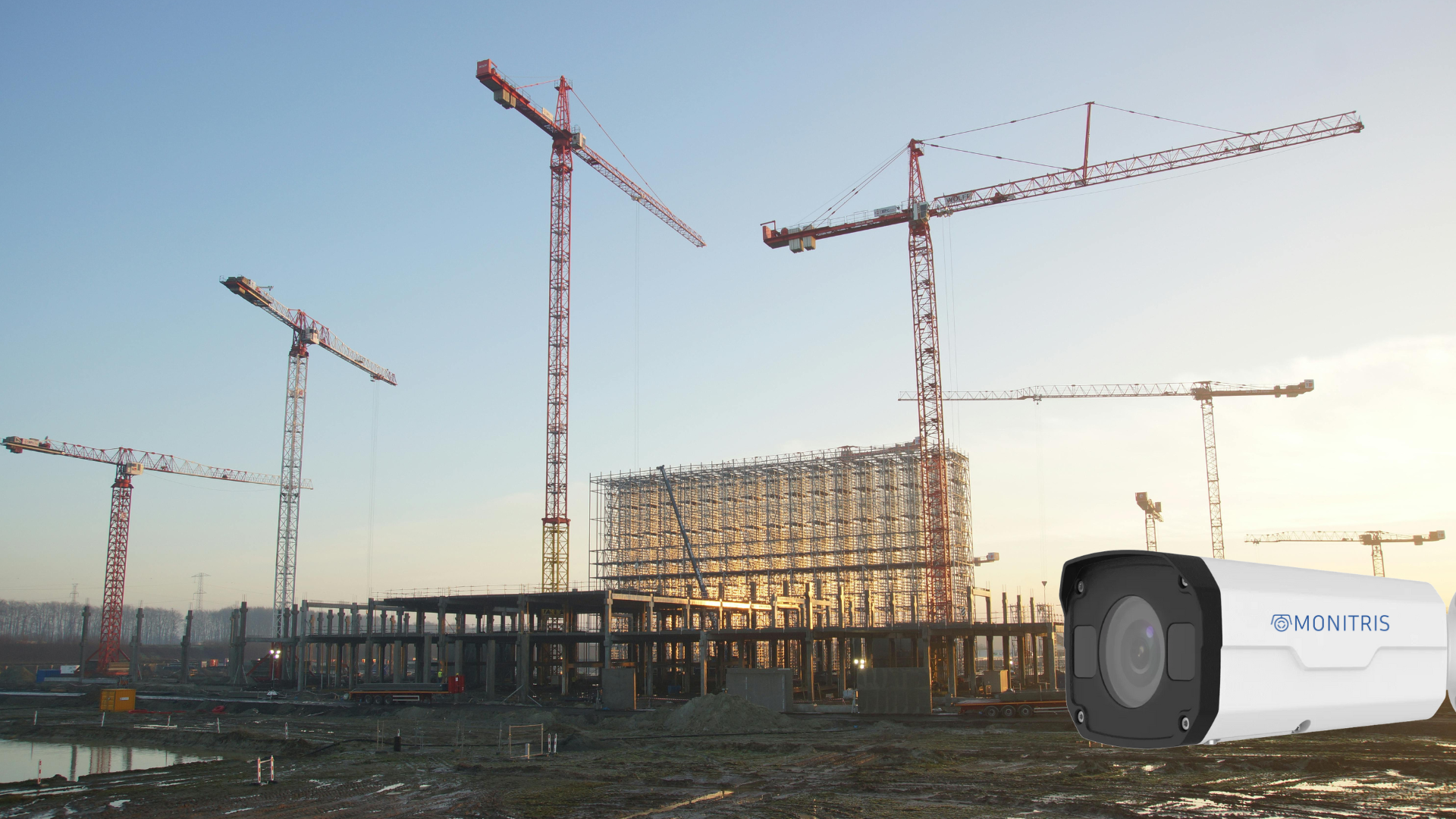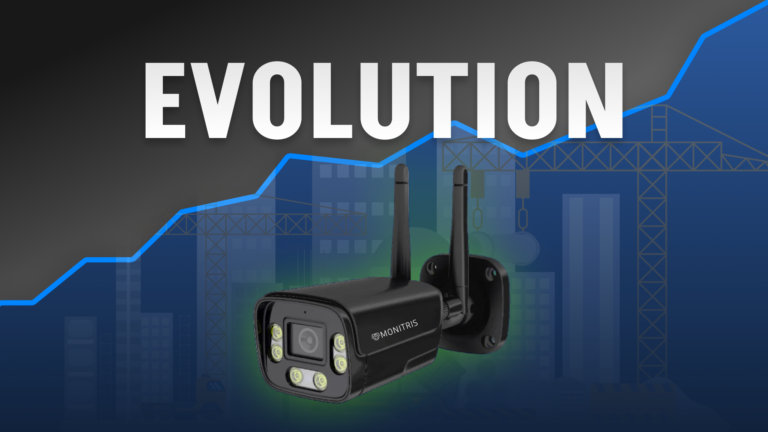Site monitoring is a crucial aspect of construction projects. It helps ensure workplace safety, optimize productivity, and minimize disruptions. With proper site monitoring, the project team can make informed decisions regarding construction activities and work within tolerance for maximum productivity. It involves the use of sensors, construction camera, and other technologies to track and analyze the various aspects of the construction site.
Construction camera provide visual insights that help with progress tracking and prevent accidents and possible litigation by ensuring the safety of workers. It also helps in preventing theft or vandalism of heavy construction equipment.
Comparing the 3D planning model of the construction site with actual imagery from the construction camera can help determine the deformation. In particular, it enhances awareness of change, providing real-time information that enables decision-making based on facts, not assumptions.
Evolution of Construction Camera
Firstly, traditional methods of progress monitoring were in existence. These classic progress monitoring methods were inaccurate and based on assumptions. The first technology that revolutionized the monitoring of job sites was CCTV cameras. However, CCTV cameras have many limitations compared to today’s construction camera technology.
Construction camera are more technologically advanced tools, having remote monitoring capabilities with features like time-lapse monitoring, 360-degree monitoring, AI for detecting worker’s safety, computer vision for construction vehicle tracking, and more.
Traditional monitoring methods in construction are often inaccurate, time-consuming, and require manual intervention. However, modern construction camera solutions have revolutionized the industry by providing remote monitoring capabilities that ultimately result in more money and time-saving.
Traditional Methods of Site Monitoring V/s Construction Cameras
Traditional methods of site monitoring have the following problems:-
- Low frequency of monitoring as they require more manual human intervention.
- The inefficiency of reporting methods as they consume more time and have limited accessibility.
- Low quality of manually collected data as it is prone to human errors and subjectivity.
Construction cameras can address the problems associated with traditional methods of site monitoring. Here are a few examples:
- With continuous 24/7 monitoring and time-lapse photography, construction cameras result in increased monitoring frequency.
- Reporting is efficient with construction camera usage because it provides real-time monitoring and archived footage for analysis.
- Construction cameras do consistent data collection, and the data is remotely accessible, which results in improved data quality.
Key Features of Construction Cameras
Every construction site has diverse conditions and monitoring requirements. So, a construction camera must satisfy those conditions and requirements. Here is the elaboration of the features of a construction camera.
1. High-Resolution Imaging and Video Capabilities
Clarity of the visuals enables project managers to conduct in-depth analysis. So, a construction camera needs to be of high definition to capture detailed images, providing clear documentation of construction progress.
2. Remote Access and Real-time Monitoring
Modern construction cameras are equipped with remote access and real-time monitoring capabilities, allowing project stakeholders and managers to view the site feed from anywhere with an internet connection. This facilitates prompt decision-making by providing immediate insights into the construction site’s status.
3. Integration with Other Construction Management Tools and Software
Integration with construction management tools streamlines data flow and ensures that monitoring data is seamlessly incorporated into the broader project management process. It also enhances collaboration, coordination, and overall project efficiency.
4. Weather-resistant and Durable Designs
The durability of these cameras ensures they can operate consistently throughout the construction project. So, they are designed to withstand challenging environmental conditions.
Benefits of Utilizing Construction Cameras
Utilization of construction cameras contributes to overall project success by enhancing transparency, safety, problem-solving capabilities, and the efficiency of project management processes. Here is a detailed elaboration of the benefits of utilizing construction cameras.
1. Improved Project Transparency and Communication
Along with the project management team, stakeholders, clients, and investors can view the progress of the project remotely, reducing the need for on-site visits. This transparency fosters better communication and collaboration among all involved parties.
2. Enhanced Safety and Security on Construction Sites
Cameras can be strategically positioned to monitor adherence to safety protocols, ensuring a safer working environment. Construction cameras also act as surveillance tools, safeguarding against theft, vandalism, and unauthorized access to the construction site.
3. Efficient Problem Identification and Resolution
Construction cameras provide high-resolution images and videos for real-time remote monitoring, enabling the rapid identification of issues. This aids in faster issue resolution.
4. Time and Cost Savings Through Optimized Project Management
Construction cameras allow project managers to make informed decisions remotely, reducing the frequency of on-site visits. Continuous monitoring enables the project management team to detect potential delays or disruptions. Timely intervention helps in mitigating issues before they escalate, preventing costly delays.
Choosing the Right Construction Camera
Selecting the appropriate construction camera is pivotal for effective project monitoring, safety assurance, and documentation throughout the construction lifecycle. To ensure a suitable choice, several technical considerations must be taken into account:
1. Project-Specific Needs and Requirements
Tailor your camera selection to the unique demands of your construction project. Assess factors such as project scale, duration, environmental conditions, and resolution prerequisites. For expansive projects, opt for cameras with extended range capabilities or robust resistance to adverse weather elements.
2. Budgetary Constraints and Cost-Benefit Analysis
Align your camera choice with budgetary limitations while balancing essential features. While premium cameras offer advanced functionalities, they often accompany a substantial price tag. Perform a meticulous cost-benefit evaluation to ascertain the optimal value for your investment.
3. Key Features
Prioritize features such as high-resolution image/video capture, remote monitoring functionalities, weatherproof construction, night vision capabilities, motion detection systems, and cloud storage options. These attributes facilitate comprehensive surveillance and streamlined access to archived footage.
4. Popular Camera Models and Reviews
Conduct thorough research and comparison of prevalent construction camera models based on user feedback, ratings, and industry endorsements. Prioritize cameras renowned for reliability, durability, and favorable customer satisfaction.
Implementing Construction Camera in Your Project

Incorporating construction cameras into your project management strategy can greatly improve oversight, communication, and record-keeping. Here’s a straightforward guide to effectively implementing construction cameras:
1. Step-by-step Guide for Integrating Construction Cameras
Assess project needs: Evaluate the project size, goals, and surveillance requirements to determine camera quantity and type.
Determine camera locations: Identify strategic spots for camera placement to ensure comprehensive site coverage.
Select suitable camera features: Choose cameras with essential features like high-resolution imaging, remote access, and weather resistance.
Install cameras: Deploy cameras according to the predetermined placement plan, ensuring proper mounting and connectivity.
Integrate with management software: Connect camera feeds to existing project management tools for seamless monitoring and documentation.
2. Training and Onboarding for Construction Staff
Conduct training sessions: Teach staff how to operate cameras, access live feeds, review recordings, and troubleshoot common issues.
Hands-on practice: Allow staff to practice camera use in a controlled setting to build confidence and skill.
Provide ongoing support: Offer continued technical assistance and resources for any questions or issues that arise.
3. Overcoming Potential Challenges
Technical problems: Prepare for connectivity issues or malfunctions by establishing troubleshooting procedures and backup plans.
Resistance to change: Address potential resistance by highlighting the benefits of camera use, such as improved safety and productivity.
Privacy concerns: Address privacy worries by clearly defining camera policies, obtaining consent where needed, and ensuring compliance with regulations.
Bonus Tip: You can hire a professional construction camera and monitoring service provider company. They will take care of all installation, maintenance, and other problems while you can focus on your project.
Regulatory and Ethical Consideration
Considering regulatory and ethical aspects is essential when implementing construction cameras. Here’s a detailed overview:
1. Privacy Concerns and Legal Considerations
Construction cameras capture footage that may include sensitive information about individuals, potentially violating privacy rights. Adhering to relevant laws and regulations regarding surveillance, data protection, and privacy is crucial. This includes obtaining consent when needed, displaying visible signage indicating camera presence, and securely storing and handling footage to prevent unauthorized access.
2. Implementing Ethical Practices
Ethical considerations involve principles of fairness, transparency, and respect for individuals’ rights. When using construction cameras, it’s important to prioritize ethical practices such as minimizing intrusiveness by focusing on work areas, respecting workers’ and bystanders’ privacy, and using footage only for intended purposes like monitoring progress and safety. Clear communication about cameras’ presence and purpose helps build trust.
3. Compliance with Industry Standards and Regulations
Construction projects must comply with industry-specific standards and regulations governing surveillance and privacy. This includes following guidelines from organizations like the Occupational Safety and Health Administration (OSHA) and the American National Standards Institute (ANSI). Staying updated on industry best practices and regulations ensures camera usage aligns with standards and reduces risks associated with non-compliance.
Conclusion
Integrating construction cameras into project management practices offers numerous benefits, including enhanced safety, productivity, and documentation. However, it’s crucial to navigate regulatory and ethical considerations effectively. This entails addressing privacy concerns, adhering to legal requirements, and implementing ethical practices such as transparency and respect for individuals’ rights. Compliance with industry standards and regulations further ensures responsible camera usage. By following a systematic approach to implementation, including thorough training and overcoming potential challenges, construction projects can leverage the advantages of camera technology while mitigating risks. Ultimately, prioritizing regulatory and ethical considerations facilitates smoother project execution and fosters trust among stakeholders.


